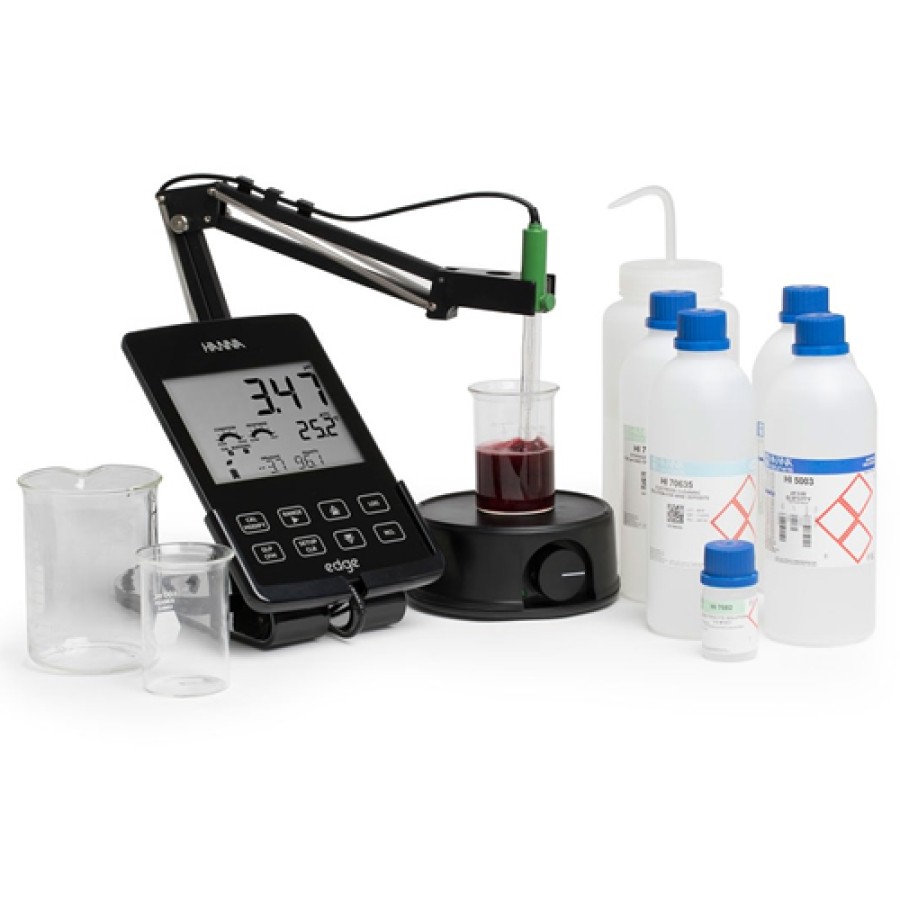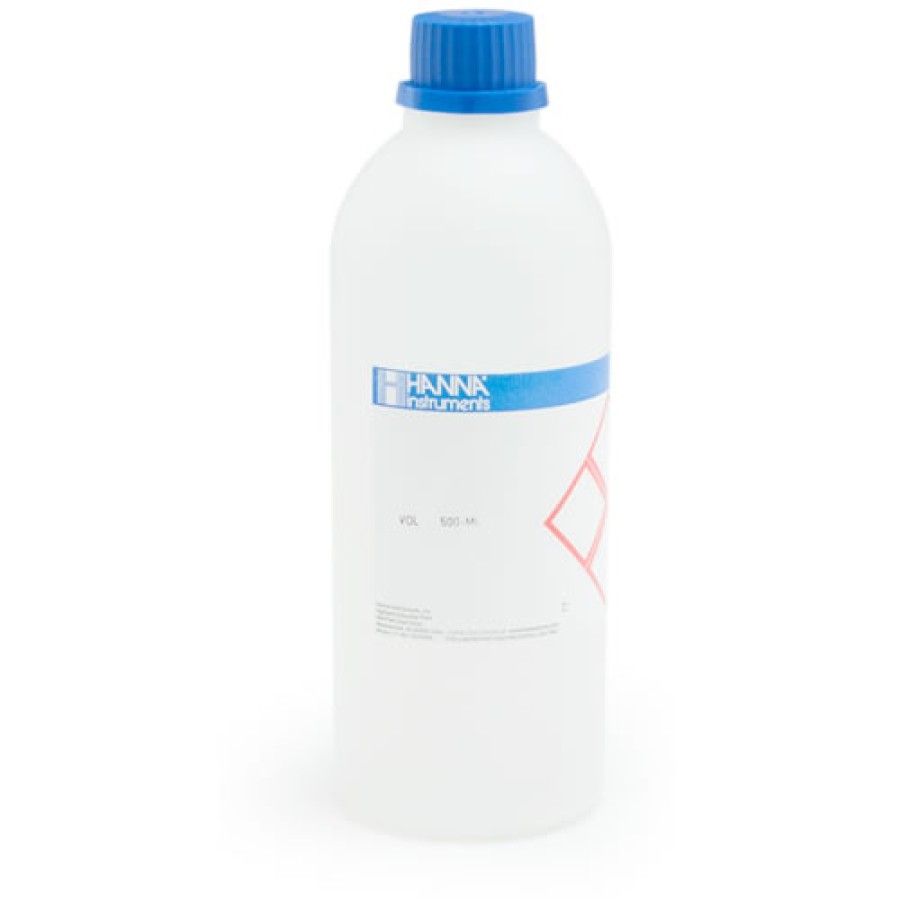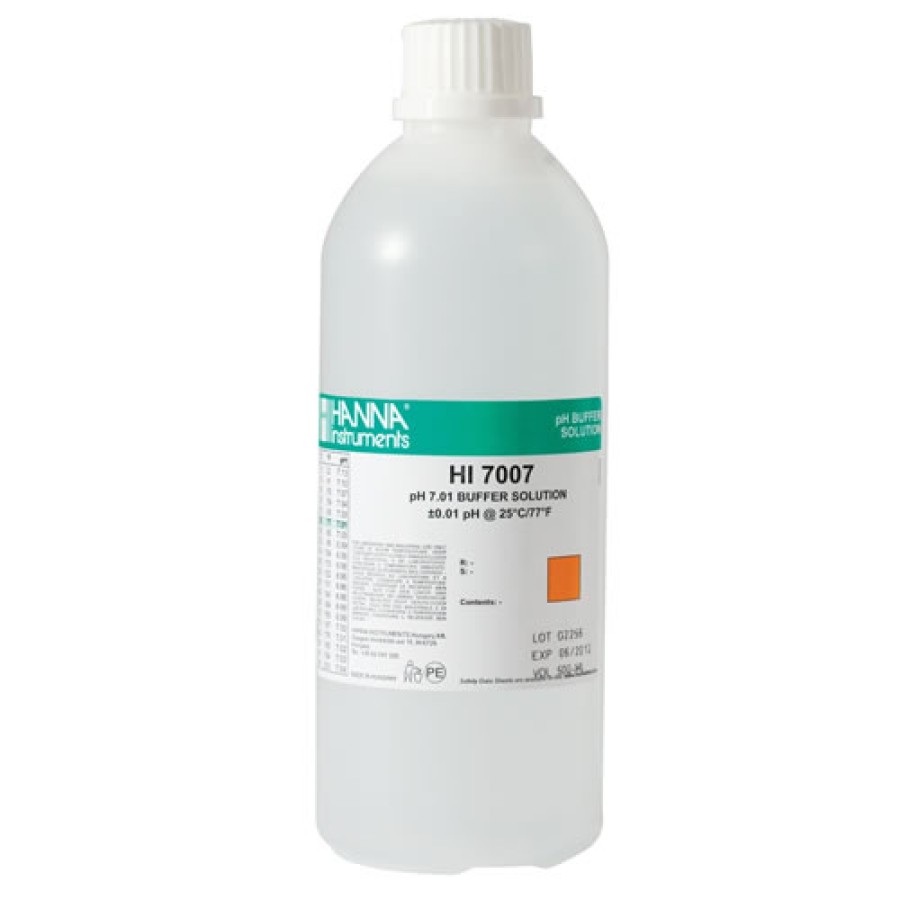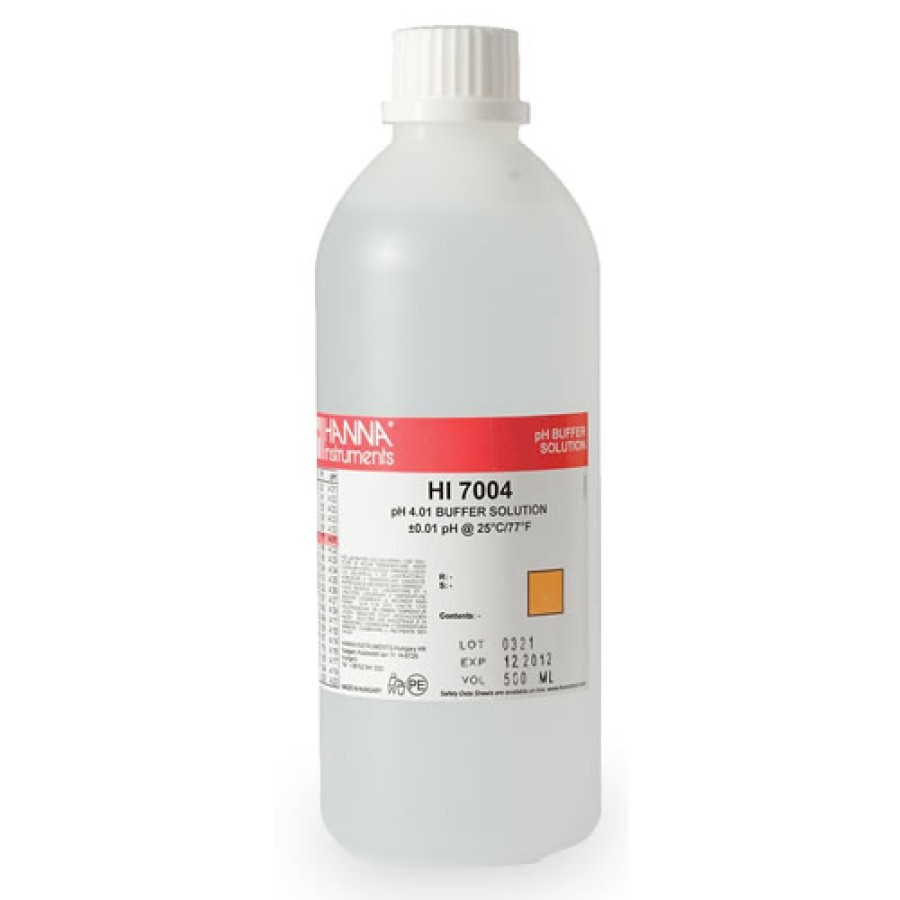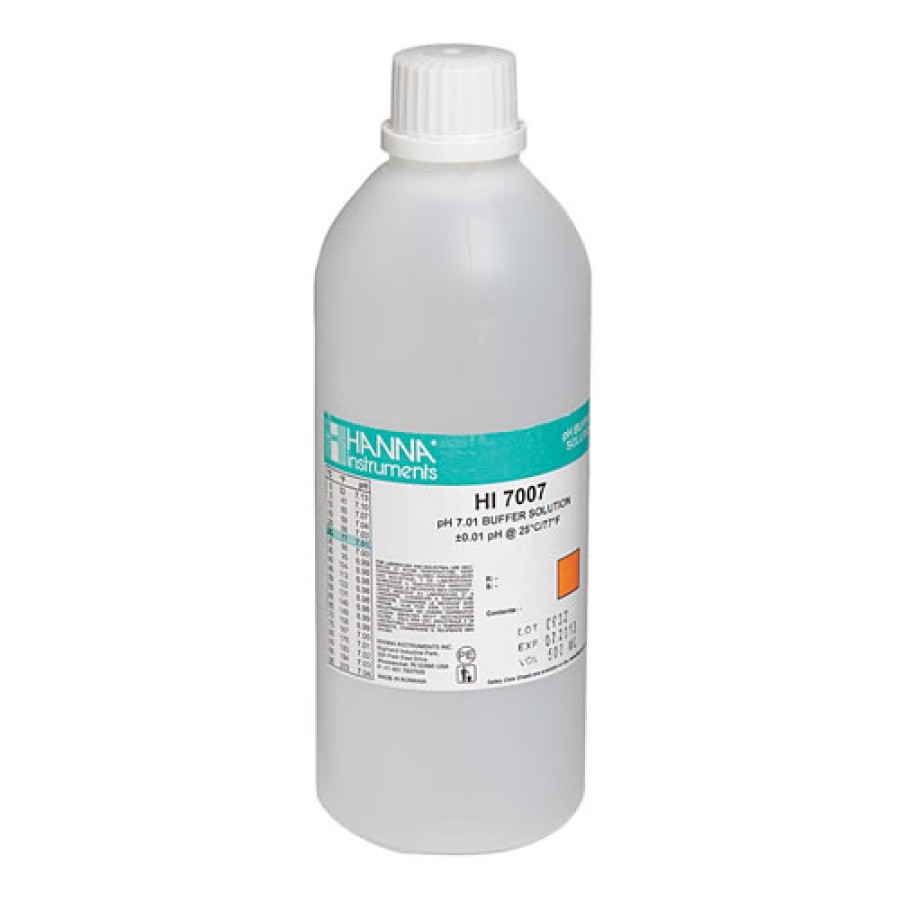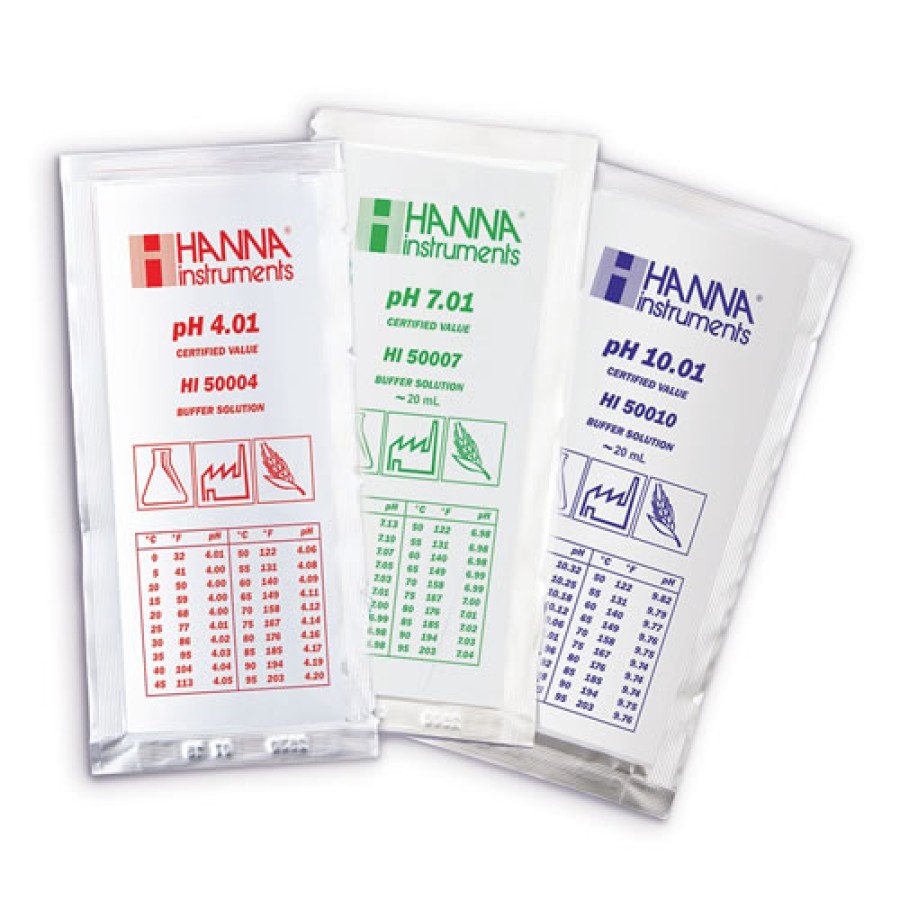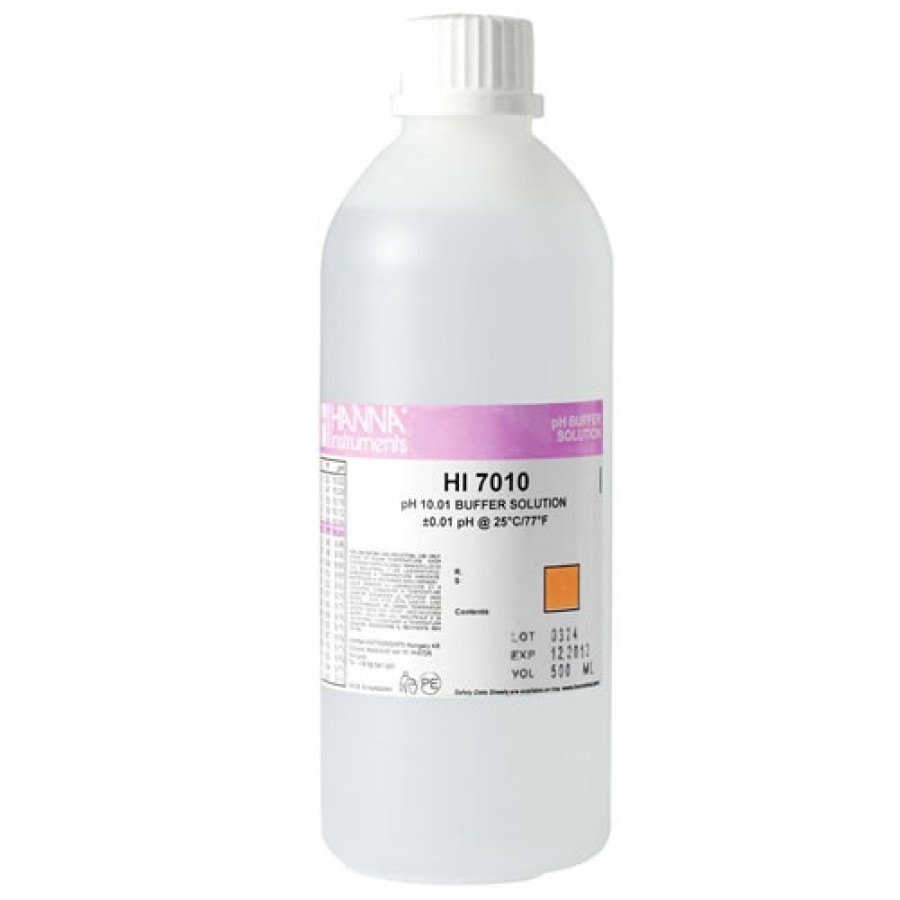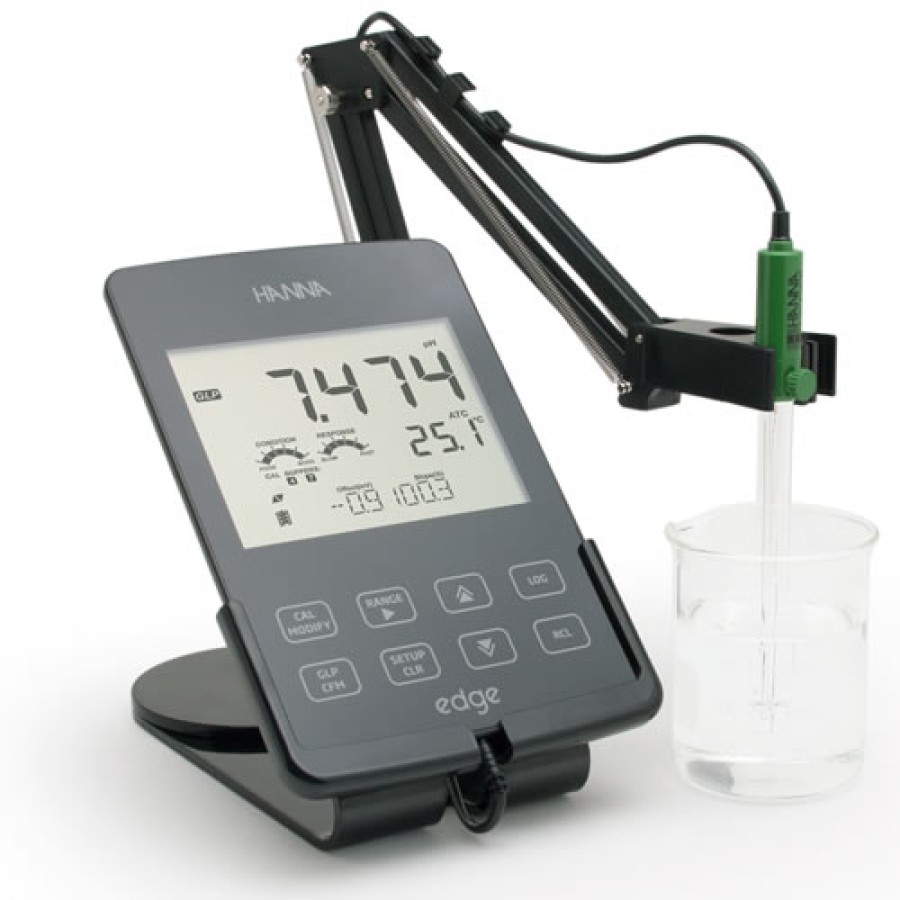HANNA HI2020W - edge Multiparameter pH Meter Kit
- Brand: Hanna Instruments
- Product Code: HI2020W
- Availability: 10 - 14 Working Days
- Rp.17,700,000
Tags: HANNA, Waterproof, Portable, pH, Temperature, Meter
The edge HI2020W wine pH meter (kit) includes the popular HI2020 edge meter featuring a groundbreaking, slim design. The edge meter is only 0.5” thick yet rich in features to accommodate the needs of a vast amount of customers. The edge HI2020W wine pH meter (kit) also includes a wine specific pH electrode that is resistant to clogging, as well as all required solutions including a pH electrode cleaning solution specific to wine. The edge HI2020W wine pH meter (kit) can be upgraded at any time with additional probes to measure Conductivity or Dissolved Oxygen.
The pH of wine is important to determine because it will affect the quality of the final product in terms of taste, color, oxidation, chemical stability and other factors. Generally in winemaking, the higher the pH reading, the lower amount of acidity in the wine. Three important factors in determining the pH of wine include the ratio of malic acid to tartaric acid, the amount of potassium, and the total amount of acid present.
Most wines optimally have a pH between 2.9 and 4.0, with values differing based on the type of wine. Values above pH 4.0 indicate that the wine may spoil quickly and be chemically unstable. Lower pH values allow the wine to stay fresher for a longer period and retain its original color and flavor. High pH wine is more likely to breed bacteria and become unsuitable to drink. For finished white wines, the ideal pH is between pH 3.00 and pH 3.30, while the final pH for red wine is ideally between pH 3.40 and pH 3.50. The optimal pH before the fermentation process is between pH 2.9 and pH 4.0. The pH of wine therefore not only affects the color of wine, but also the oxidation, yeast fermentation, protein stability and bacteria growth and fermentation.
The edge HI2020W wine pH meter (kit) includes all the necessary supplies to determine the pH of wine must and juice accurately. The meter supplied with the HI2020W is the multiparameter edge, HI2020. The HI2020 is an advanced meter that is rich in features including using digital electrodes that can be swapped out anytime to switch to a different parameter, built in rechargeable battery, two USB ports, datalogging, automatic calibration, GLP (good laboratory practice) data for last calibrations, and Hanna’s exclusive calibration check feature that will alert the user to potential problems during calibration including when to clean the electrode and when the buffer might be contaminated. The HI 2020 is a versatile meter that be used as a benchtop, portable and even a wall mount to conserve space. The HI2020 is one of the most advanced meters available but the most important aspect in measuring pH is having the correct sensor for the application.
The HI2020W wine pH meter (kit) is packaged with the HI10480 in place of the normally supplied HI11310. The HI10480 is a specially designed pH electrode that is resistant to clogging to the solids found in grape juice and must. This double junction, refillable pH electrode has a unique ground glass junction and PTFE sleeve to provide unsurpassed performance for the wine industry. A standard pH electrode will have a ceramic junction that can be easily clogged by solids. When this happens the pH readings will be erratic and drift over time before stabilizing on the actual pH value of the wine sample. The HI10480 with CPS technology will prevent the junction from clogging. The HI10480 is a digital electrode that when used with the edge HI2020 will change the default buffer set from pH 4.01and 7.01 to pH 3.00 and 7.01.
The edge HI2020W wine pH meter (kit) includes the HI180-1 compact magnetic mini-stirrer. The use of a magnetic stirrer allows for proper mixing and the sample to be homogenous in consistency and temperature. The stirring of the sample also helps speed up the response time of a sensor in achieving a stable reading.
The edge HI2020W wine pH kit also includes all the solutions for calibration and maintenance. In order to ensure the highest of accuracy in measurement it is important to bracket the calibration buffers around the expected reading. Since the pH of wine is less than pH 4.01 it is important to calibrate at a lower pH value. For calibration the kit includes the HI5003 pH 3.00 and the HI5007 pH 7.01 technical calibration buffer. Each bottle of buffer NIST traceable is supplied with a certificate of analysis that includes lot number, expiration date and reference materials used in production.
For maintenance the The HI70635L cleaning solution for wine deposits and the HI70300L electrode storage solution. When the “clean electrode” message is displayed during the calibration of the HI2020 edge or there is a poor probe condition (i.e. less than 30%) then soak the HI10480 in the cleaning solution for 15 minutes to clean any deposits from the glass surface. After cleaning the probe should be rinsed with purified water and then allowed to soak in the storage solution for 2-3 hours. The electrode storage solution is also used when the electrode is not in use. Either place a small amount into the storage cap or into a beaker in order to maintain a properly hydrated electrode.
The most common cause for pH measurement inaccuracies is an unclean or improperly cleaned electrode. This is very important to note, because during calibration, the instrument assumes that the electrode is clean and that the standardization curve created during the calibration process will remain a valid reference until the next calibration. pH meters on the market today will allow an offset voltage of approximately ±60 mV. The deviation from 0 mV is not unusual but ideally should be no greater than ±30 mV. The calibration process compensates for the change in offset voltage. If the mV offset continues to deviate and the meter is calibrated with a dirty electrode then inaccurate readings will result.
Features:
pH CAL Check™ - edge alerts the user of potential problems during the pH calibration process. By looking at the voltages generated when calibration to at least two points, edge will indicate if the probe needs to be cleaned or if the buffer is contaminated. After calibration, edge provides indicators for both the overall probe condition and response time.
HI10480 Wine pH electrode with CPS Sleeve Junction - CPS™ (Clogging Prevention System) is an innovation in electrode technology. Conventional pH electrodes use ceramic junctions that clog quickly when used in wine. When the junction is clogged, the electrode does not function. CPS™ technology utilizes the porousness of ground glass coupled with a PTFE sleeve to prevent clogging of the junction. The ground glass allows proper flow of the liquid, while the PTFE sleeve repels dirt. As a result, pH electrodes with CPS™ stay fresh up to 20 times longer than conventional electrodes.
What's in the Box:
(1) USB cable
(1) Benchtop docking station with electrode holder
(1) Wall mount cradle
(1) 5 VDC power adapter
(1) Digital double junction, refillable with 3.5M KCl electrolyte solution pH electrode with PTFE sleeve, built in temperature sensor, and 3.5 mm connector.
(1) 115 VAC black compact magnetic mini stirrer with Speedsafe™ technology with micro-stir bar
(1) pH 3.00 technical calibration buffer (500 ml)
(1) pH 7.01 technical calibration buffer (500 ml)
(1) Cleaning solution for wine deposits (500 ml)
(1) Electrode storage solution (500 ml)
(1) Instruction manual
(1) Quality certificate.


